100 Search Results for "chromatography and tlc" – Page 3
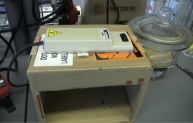
DIY UV Developing Chamber
https://benchfly.com/video/88/diy-uv-developing-chamber/Create your own UV developing chamber to eliminate the accidental UV exposure when running TLCs or from a careless labmate...we've got one of these developing chambers on every bench. Cheap and easy.
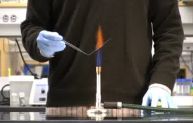
How to Make a Bacterial Spreader
https://benchfly.com/video/65/how-to-make-a-bacterial-spreader/Making your own bacterial spreader is fast and easy as we demonstrate in this video - all you need is a pipette and a flame. No words necessary...it's that easy!

Comparing Capillary Cutters for LCMS
https://benchfly.com/video/138/comparing-capillary-cutters-for-lcms/These two different methods of cutting capillaries can result in major differences in the cleanliness of the cut. Using the wrong technique may affect the subsequent chromatography and analysis.
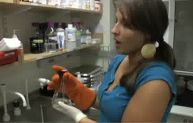
Pouring and Running an Agarose Gel
https://benchfly.com/video/91/pouring-and-running-an-agarose-gel/Knowing how to pour and run DNA agarose gel electrophoresis is essential for many molecular biology techniques. Here I show how to pour agarose gels in two of the most common types of gel boxes.

How to Quickly Pour a Small Number of LB-Agar Plates
https://benchfly.com/video/160/how-to-quickly-pour-a-small-number-of-lb-agar/If you want to quickly pour LB agar plates, but you only need a small number of them, preparing, autoclaving, pouring and cooling a large batch can be time consuming and wasteful. Here's a quick tip to pour a small number of plates quickly.

How to Use Graduated Cylinders
https://benchfly.com/video/153/how-to-use-graduated-cylinders/Learning how to use graduated cylinders to accurately read volume is an essential component of biological and chemical research. So here's a quick tutorial on how to select and read the properly sized graduated cylinder for your experiment.

Serial Dilution
https://benchfly.com/video/113/serial-dilution/Performing a proper serial dilution is important when preparing stock reagents and performing experiments. Here is the technique and the math behind serial dilution.
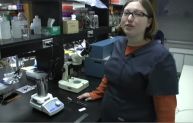
How to Bomb-load Capillary Tips or Frits for LC/MS
https://benchfly.com/video/104/how-to-bomb-load-capillary-tips-or-frits-for-/This is how we prepare and bomb load capillary tips and frits for use in LC/MS. Be sure to wear proper protection as this protocol uses high pressure to pack the LC/MS tips.
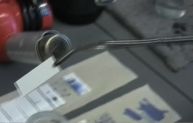
CAM staining TLC plates
https://benchfly.com/video/86/cam-staining-tlc-plates/Ceric Ammonium Molybdate (CAM) stain. Good for detecting polyhydroxylated compounds.
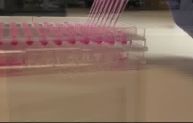
Perfecta3D Hanging Drop Plates for 3D Spheroid Culture - Pipetting Demo
https://benchfly.com/video/1262/perfecta3d-hanging-drop-plates-for-3d-spheroi/Perfecta3D Hanging Drop Plates allow researchers to form uniform 3D spheroids or embryoid bodies. In a 96- or 384- well format, users simply pipet their cell suspension into each well, and it hangs in a drop below the well. As cells are in suspension, not in contact with any matrices or surfaces, they self-assemble into a spheroid. One spheroid per well gives researchers control over their data points and the size of each spheroid.

